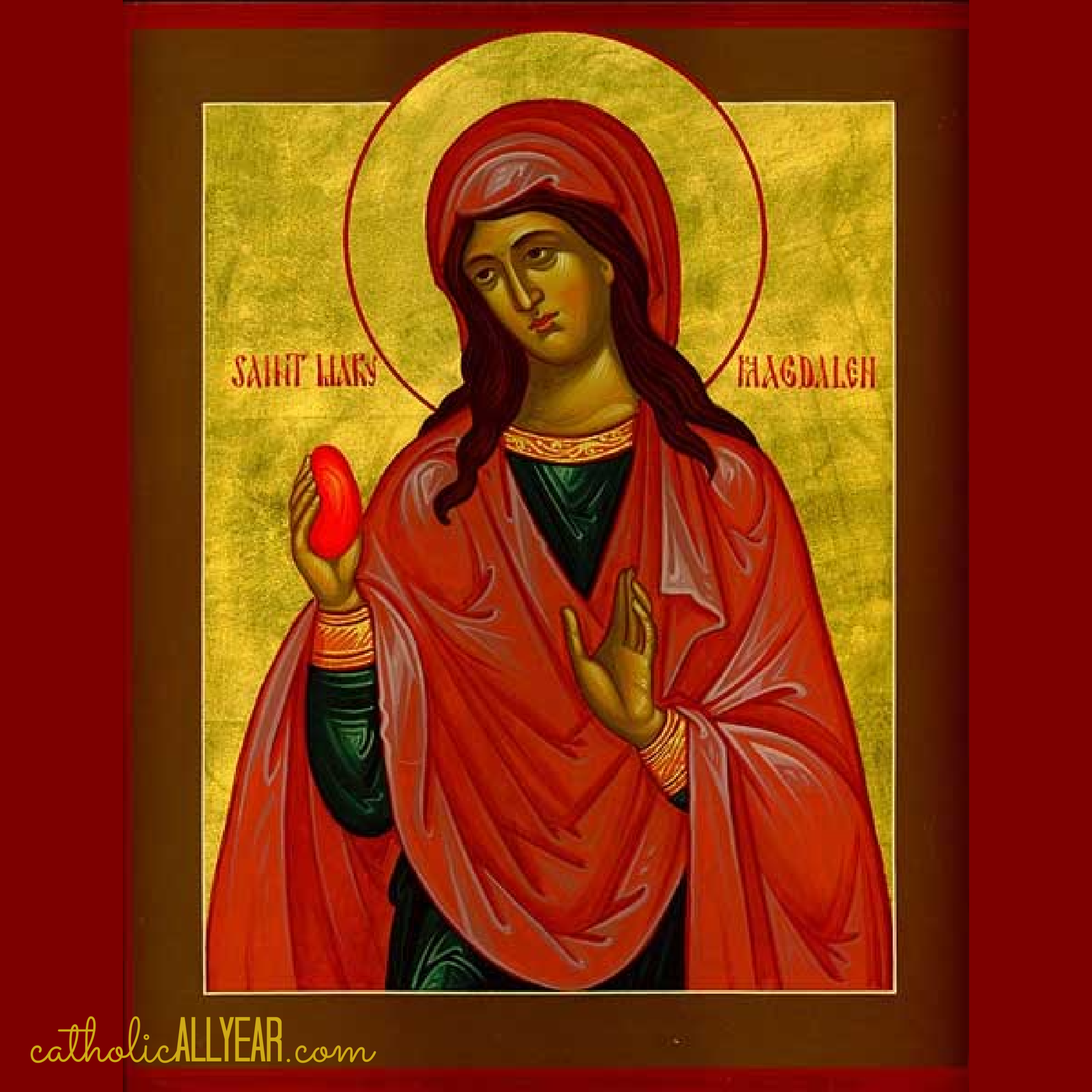The Christian connection of most of the secular traditions surrounding Easter aren’t readily apparent. Bunnies, chicks, eggs? Sure, why not? But also . . . what do they have to do with, um, Jesus? I can’t vouch for all of it. But there are actually some very cool ancient Christian legends that explain why we dye eggs for Easter.
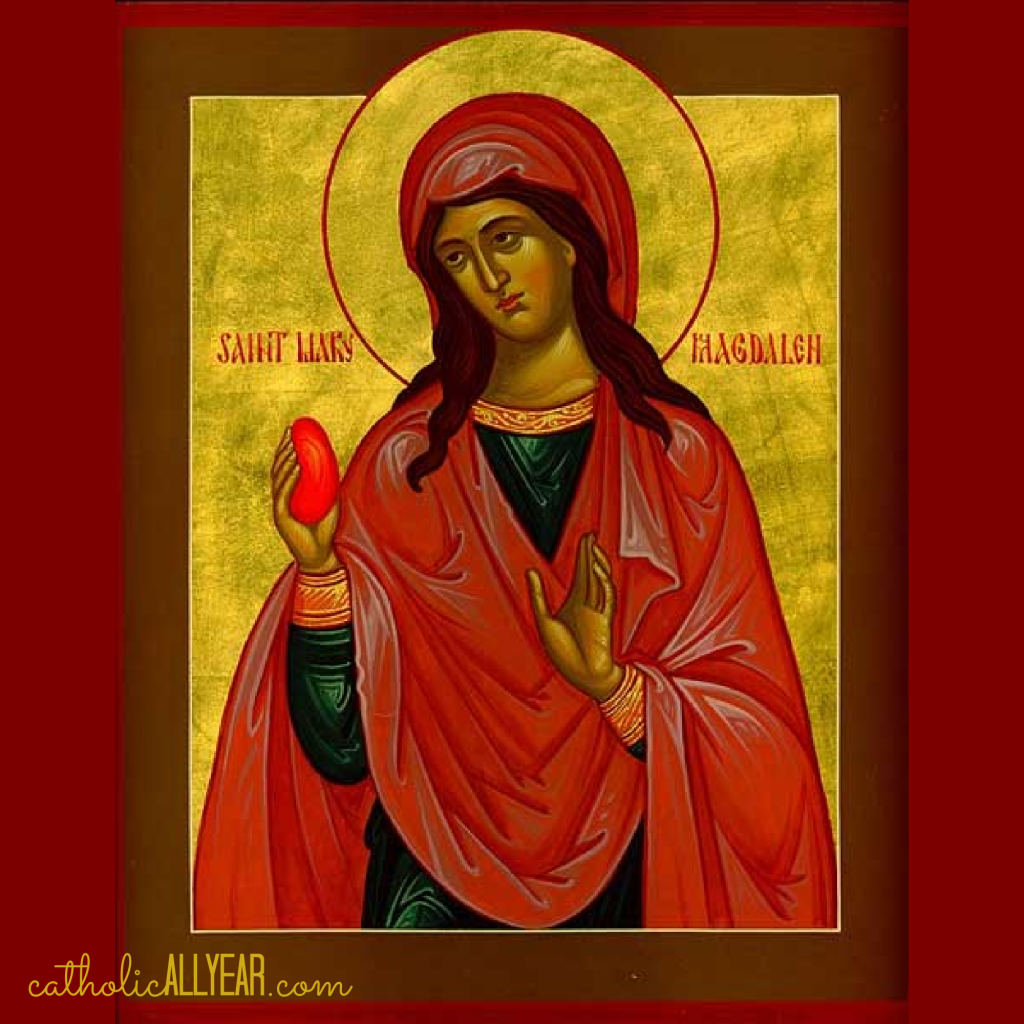
MARY MAGDALENE AND THE RED EGG
There are different versions of the stories, but the one I like to tell says that when Mary Magdalene went to the tomb on Easter morning with the other Holy Women, she brought with her a basket of hard-boiled eggs. It would be nice to have something to eat together at daybreak as they looked for someone who could help them roll away the stone. Then they could anoint the body of Our Lord. But when she arrived at the tomb, there was no time for breakfast. Things got really crazy really quickly, what with the earthquake, and the message from an angel, then the meeting with the risen Jesus himself, and being charged with bearing the message of the resurrection to the apostles. (Mark 16, Matthew 28)
As if the day hadn’t been noteworthy enough, when Mary Magdalene grabbed her basket to run back and tell, she saw that the white eggs inside had been miraculously transformed to a rainbow of colors.
Later, as a wealthy woman of importance in Jerusalem, she was granted an audience with the Emperor Tiberius Caesar in Rome. She denounced Pontius Pilate for his treatment of her people. She gave an account of how weak-willed the governor had been in the face of the angry crowds, and his unjust conviction and execution of Jesus Christ. She went on, explaining to the emperor how Jesus, who had gone into the tomb, came forth again in his glorious resurrection. Seeing eggs upon the emperor’s table, she picked one up to illustrate her point.
The emperor scoffed, saying that there was as much chance of Christ being raised from the dead as there was of that egg turning red in her hand. Mary smiled, remembering the miracle of Easter morning. She prayed to God for another miracle. The egg in her hand became bright red before the eyes of the emperor and his retinue. The shocked emperor later removed Pilate from his post.
Dyeing eggs and, in the Byzantine Catholic and Eastern Orthodox traditions, red eggs especially, became a way to remember Jesus’ resurrection. These eggs are traditionally dyed with onion skins.
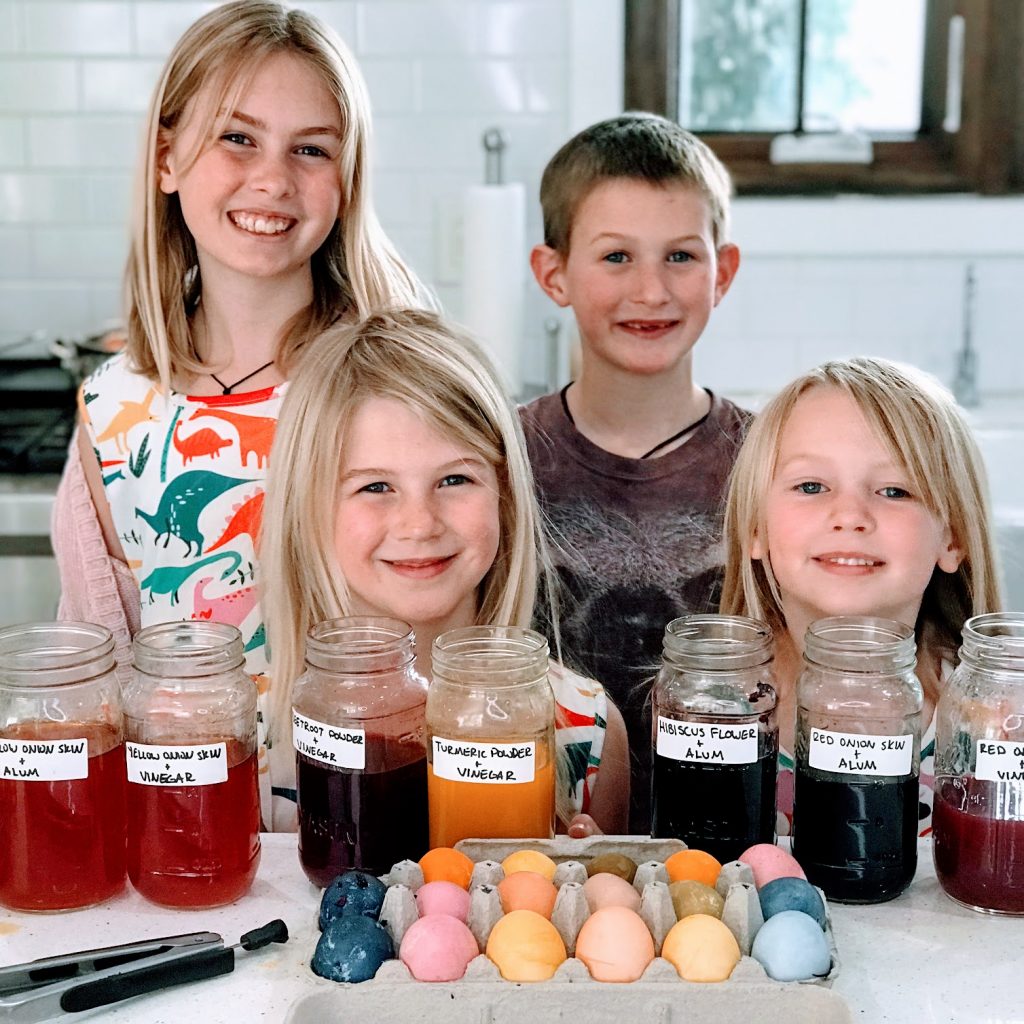
DYEING EGGS NATURALLY
Dyeing eggs with onion skins and other natural flowers, herbs, and vegetables is something I’ve wanted to do for many years. I finally set out to get it figured out to be able to include it in the Liturgical Year Subscription Boxes (subscriptions will open up again during Eastertide! Get the egg dye kit on its own here.). I was amazed at how cool the process was, and how great the color turns out to be. Not to get all metaphysical here, but the experience is so much deeper somehow than dumping little tablets into cups.
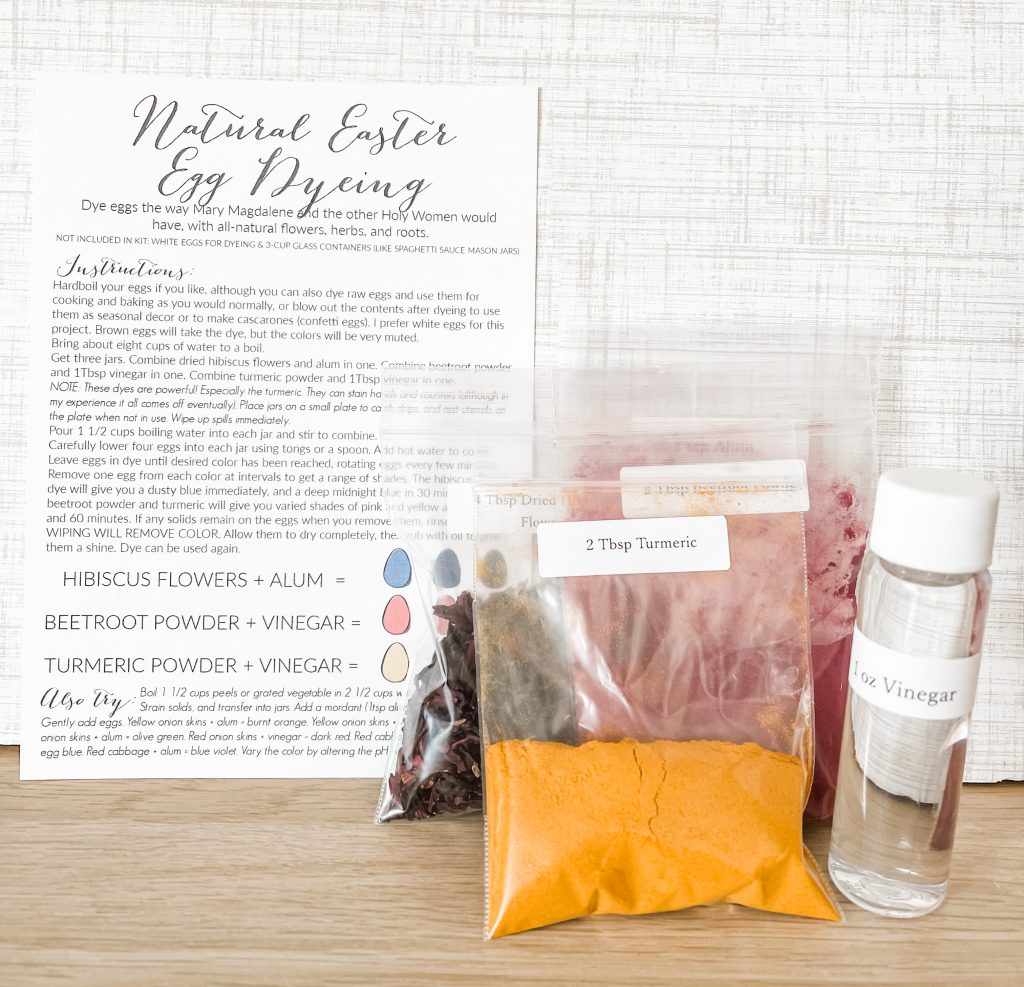
Even starting at the dried flower and herb stage rather than gathering one’s own, you get different smells and consistencies. You can tell that these are the products of nature, given to us by a Benevolent Creator who knew we’d want to make things pretty colors. Don’t get me started on this. First, it was butter proving the existence of God, now it’s onion skins. But seriously. I think it all does. And you just don’t get that same sense from fizzy dye tablets.
I also like that feeling of connection with the Holy Women who would have dyed yarn and fabric this way, as well as eggs–when the eggs weren’t being miraculously transformed that is.
Here’s a video:
(Sorry about the sound quality, I forgot to turn on my external mic.)
What you need:
- White eggs (brown eggs work for onion skin red dye, but don’t work as well for other colors)
- Large jars
- Dried hibiscus flowers
- Turmeric root powder
- Beetroot powder
- White and red onion skins (just the papery outer layer)
- Alum powder
- Vinegar
- You can also use red cabbage and other grated vegetable
What you do:
Hard-boil your eggs if you like, although you can also dye raw eggs and use them for cooking and baking as you would normally, or blow out the contents after dyeing to use them as seasonal decor or to make cascarones (confetti eggs). I prefer white eggs for this project. Brown eggs will take the dye, but the colors will be very muted. The exception is dyeing eggs red with onion skin. That works on white or brown eggs.
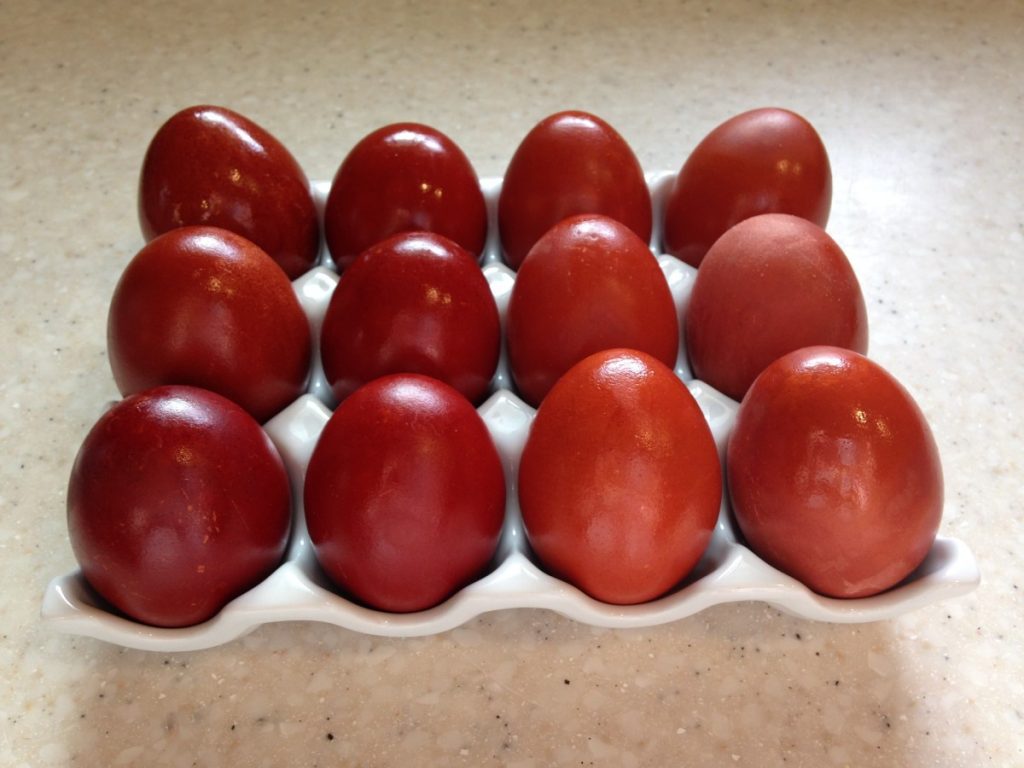
ONION SKINS & OTHER VEGETABLES
- Boil 1 1/2 cups of one color onion peel or grated vegetable in 2 1/2 cups water for 15-20 minutes. (Double if you want to make two jars, one with each mordant.)
- Strain solids, and transfer into jars.
- Add a mordant (1 tsp alum or 1 Tbsp vinegar).
- Gently add eggs.
- Leave in the dye, checking and rotating them every 10 minutes or so until the color you want is achieved.
- Let them air dry, then rub with oil to give them a shine. (I always forget this step.)
Yellow onion skins + alum = burnt orange. Yellow onion skins + vinegar = peach to red. Red onion skins + alum = olive green. Red onion skins + vinegar = brown to red. Red cabbage + vinegar = Robin’s egg blue. Red cabbage + alum = blue-violet. Vary the color by altering the pH with baking soda!
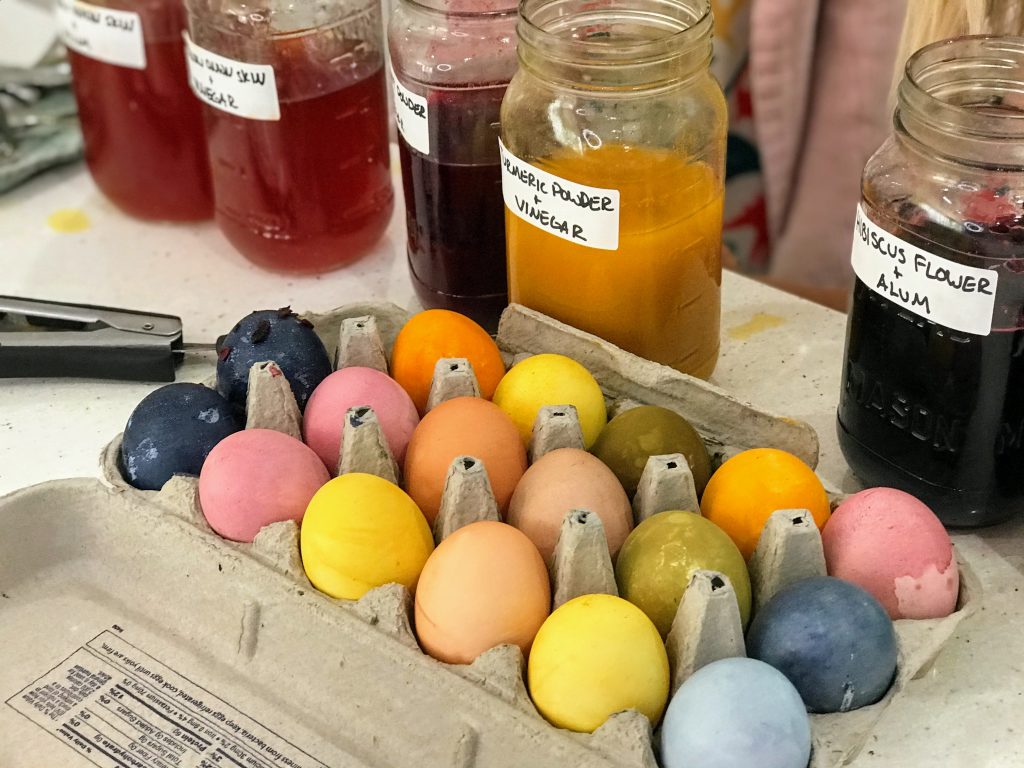
DRIED FLOWERS & HERBS
- Bring about eight cups of water to a boil.
- Get three jars.
- Combine 4 Tbsp dried hibiscus flowers and 1 tsp alum in one.
- Combine 2 Tbsp beetroot powder and 1 Tbsp vinegar in one.
- Combine 2 Tbsp turmeric powder and 1 Tbsp vinegar in one.
NOTE: These dyes are powerful! Especially the turmeric. They can stain hands and counters (although in my experience it all comes off eventually). Place jars on a small plate to catch drips, and rest utensils on the plate when not in use. Wipe up spills immediately.
- Pour 1 1/2 cups boiling water into each jar and stir to combine.
- Carefully lower up to 4 eggs into each jar using tongs or a spoon.
- Add hot water to cover.
- Leave eggs in dye until the desired color has been reached, rotating eggs every few minutes.
Remove one egg from each color at intervals to get a range of shades. The hibiscus flower dye will give you a dusty blue immediately, and a deep midnight blue in 30 minutes. The beetroot powder and turmeric will give you varied shades of pink and yellow at 15, 30, 45, and 60 minutes. If any solids remain on the eggs when you remove them, rinse with water. WIPING WET EGGS WILL REMOVE COLOR. To keep the color, don’t rinse the beetroot eggs, just let them dry with the solids on there. Allow them to dry completely, then rub them with oil to give them a shine. The dye can be used again for another batch.
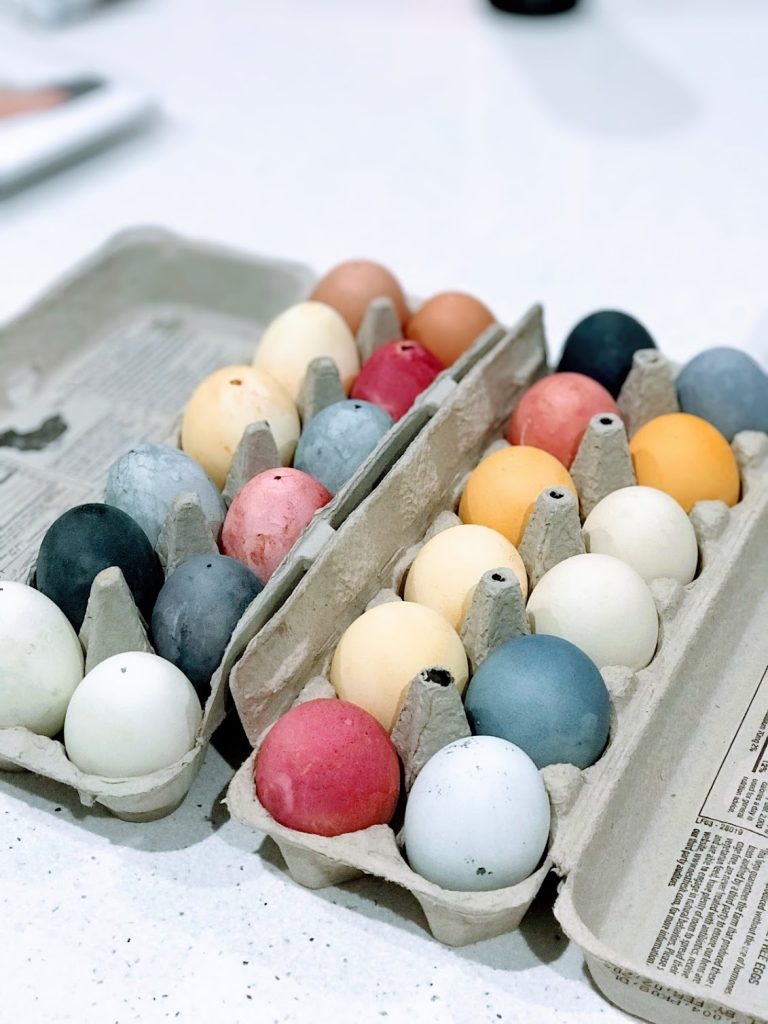
I hope you’ll give it a try!
The natural egg dye kit, plus other items from our Easter Collection, are available here in the CAY Marketplace!















